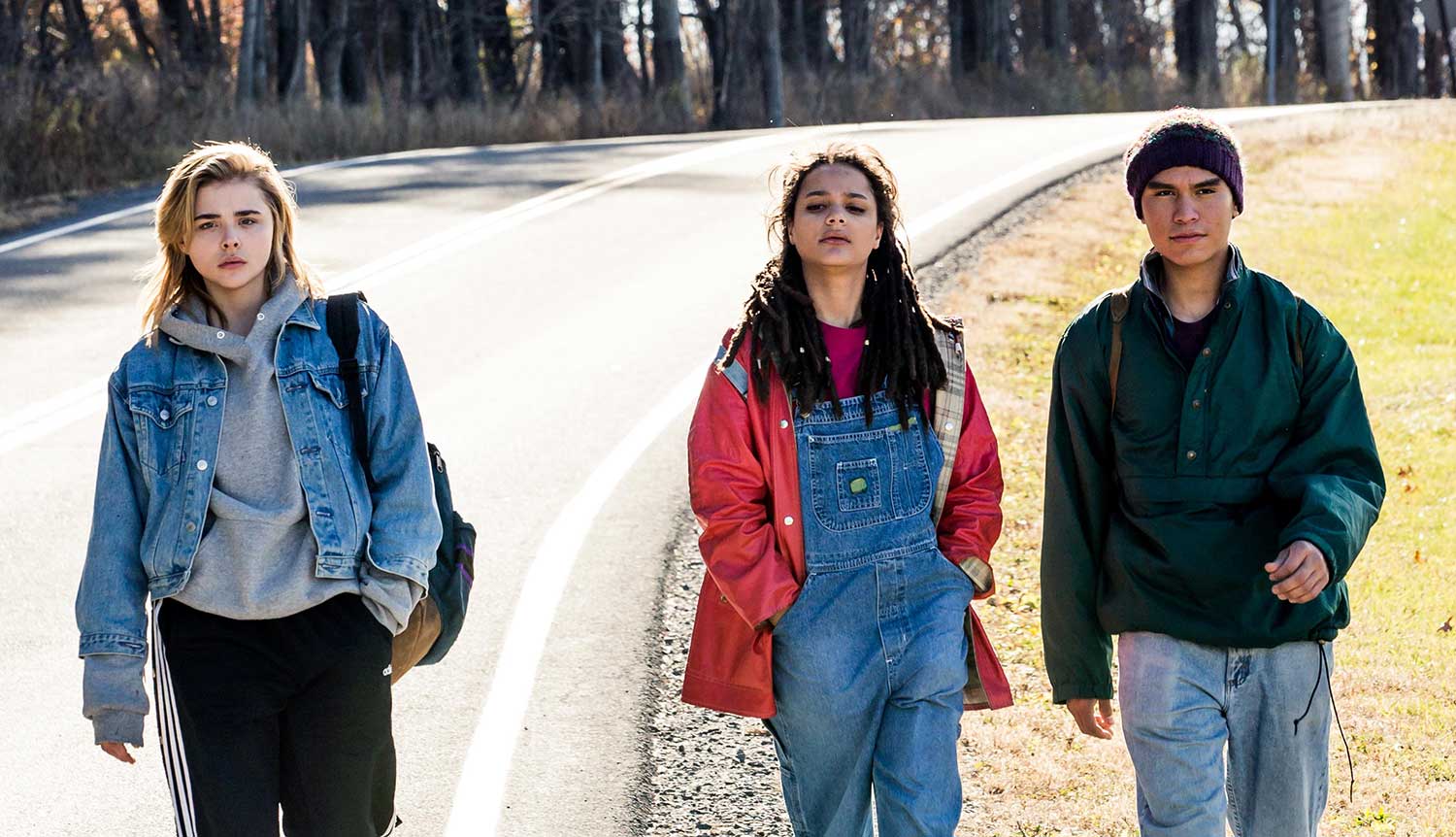PARK CITY – Gay coming of age stories are seemingly back in vogue. Last year, Sundance unveiled “Call Me By Your Name” and “Beach Rats.” In March 20th Century Fox will release “Love, Simon” and there are at least two other gay-themed high school films this critic knows of that didn’t make the Sundance cut this time around. One film, however, was selected to screen at this year’s festival and it was Desiree Akhavan’s “The Miseducation Of Cameron Post,” which had its world premiere on Monday. Notably, it differs from the other aforementioned pictures by telling the coming out story from a female perspective in front of and behind the camera.
Maggie Gyllenhaal in “The Kindergarten Teacher” [Sundance Review]
Set in 1993 and based on Emily M. Danforth’s 2012 novel of the same name, “Cameron Post” begins with the title character (Chloe Grace Moretz) exploring a budding romance with her best friend Coley (Quinn Shephard). After they are discovered fooling around after sneaking away from the Homecoming dance, Cameron’s Aunt Ruth (Kerry Butler) decides to send her to a religious conversion therapy center for treatment and schooling. And, an important note, this is nothing like the over-the-top camp depicted in Jamie Babbit’s “But, I’m A Cheerleader,” an almost 20-year-old indie also about a teenage lesbian sent to a conversion center to turn her ‘”straight.”
After arriving at the facility, which is practically in the middle of nowhere, Cameron is given the option to go home, but her Aunt passively aggressively pressures her with a line about the power of “sin” or something along those lines. In for the duration, Cameron meets the administrators of the facility: “former gay” Reverend Rick Marsh (John Gallager, Jr.) and his older sister, Dr. Lydia Marsh (Jennifer Ehle). While the latter is quite strict, Akhavan makes it clear the students are never being treated like they are in a prison. If they stay it’s because the only other option is likely the streets. In their view they are convinced they have nowhere else to go.
Cameron’s fellow students and the performances from the actors who portray them are probably the best part of the move. As Jane Fonda (her parents were originally hippies), Sasha Lane wonderfully displays as much on screen charisma and talent here as in her celebrated “American Honey” debut. Forrest Good Luck is fantastic as Adam Red Eagle, a Native American Indian sent to the facility after his “two-spirit” identity no longer serves his father’s political ambitions. Tony nominee Emily Skeggs plays Cameron’s new roommate Erin, a girl who was a little too into sports for her parents’ liking and she becomes a prime source of comic relief. Owen Campbell is Mark, a young man who clearly doesn’t want to be there, but is simply too feminine for his father’s tastes to be allowed back home.
Jane, Forrest and Cameron eventually form a close knit trio, as seemingly the only students who realize the therapy is just a ruse and that Reverend Rick and Dr. Lydia obviously have no idea what they are actually doing. As the weeks go by Cameron’s longing for Coley returns and reconnecting with her somehow becomes her primary goal. The group therapy sessions with Dr. Lydia? The sit downs with Reverend Mike? Yeah, she can see their wheels spinning faster than the “adults” can spin them at her.
Moretz is as good as she can be with the material, but because Cameron’s storyline has inherently less conflict (or less interesting conflict) compared to the other kids down the hall she often feels just like an observer to the proceedings. That makes it hard to root for her, but luckily for Akhavan by the time the third act rolls around Jane and Adam are so compelling you’re still heavily invested in the movie.
Akhavan and co-screenwriter Cecilia Frugiuele make a number of key changes from the book including aging up Cameron (she’s at least four years older in the film), putting less of a emphasis on her parents’ deadly car accident (it’s only referred to in passing), removing her grandmother from the narrative and really never make it clear what part of the country these events are transpiring (it’s Montana in the book). Instead, a majority of the narrative is centered almost entirely with Cameron’s time at the facility. Because of that choice, her heartbreak after her parents’ passing doesn’t resonate like it should.
Where Akhavan succeeds is whenever she has the kids doing things teenagers would be doing. At one point the trio are cooking in the kitchen and 4 Non Blondes’ 90’s one-hit wonder “What’s Going On” comes on the radio. Cameron starts humming it and within minutes is standing on the table singing it loud and proud. That gets everyone else in the room singing along too until, surprise, Dr. Lydia arrives to squash all the fun. There’s an inherent energy in that scene that often feels missing from the rest of the picture. Once the inevitable end is in sight you just wish there had been more of it. [B-]
Click here for our complete coverage from the 2018 Sundance Film Festival





